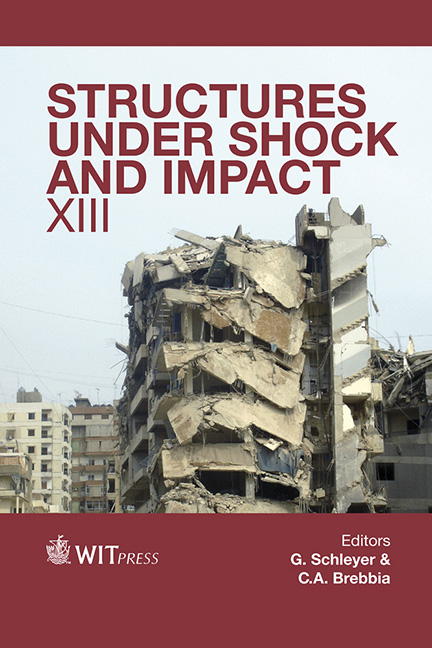The Reduction Of Peak Overpressure Using Concrete Blast Barriers
Price
Free (open access)
Transaction
Volume
141
Pages
11
Published
2014
Size
844 kb
Paper DOI
10.2495/SUSI140231
Copyright
WIT Press
Author(s)
R. Hájek & M. Foglar
Abstract
Due to the rise of terroristic attack threat, public buildings should be designed to ensure as much safety of its visitors as possible. This paper is focused mainly on understanding of blast wave dynamics in interaction with the solid building and its equipment. Especially pressure wave reflections inside a confined space are of particular interest. The effect of atmospheric overpressure on the human body is also studied. A method for computer modelling of explosive events was developed using LS-DYNA software. The FEM model was calibrated based on experimental data. Multiple arrangements and shapes of concrete barriers were then proposed for faster energy dissipation and effective reduction of the damage and injuries caused by the explosion. The most promising arrangements according to FEM modelling results were then selected for the experimental program. This paper also includes a comparison of the experimental data and results of numerical FEM analysis. The accuracy of the FEM model is then discussed. Thanks to use of TNT explosive charge, the experimental results can also be compared to other blast experiments without barriers. The effectiveness of different barrier arrangements are compared and evaluated. Keywords: explosion, air blast wave, overpressure, barrier.
Keywords
explosion, air blast wave, overpressure, barrier.





